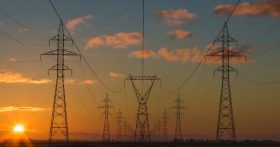Utilities, in light of the recent surge in attention to green energies and switching types of energy sources, is something of a hot button topic at the moment. The solar industry is growing every year, and wind turbines are being put up with an increasing speed across the country’s wide open spaces. It’s exciting, for certain, but it makes one reflect on the future of utilities and how the U.S. will proceed in regard to where we get our energy from.

The Future of Electrical Utilities
The U.S. Department of Energy’s National Renewable Energy Laboratory, also known as NREL, has been thinking along those lines as well. Change is on the horizon, and it's exciting and intriguing to see what will happen. It’s always good to have an idea of the game plan to get through that change with as little fan-fare as possible.

The Report
The NREL released their annual report in December of 2019 to inform various energy system stakeholders about the various future factors that will likely steer the direction of the industry for 2020 and beyond. This report often covers political policy, how that will affect the market in the long-term, and what the improved solar and wind technology will mean for the future of our energy market as a whole nation. In their report they forecast that the greener, better energy sources will indeed become more relied upon in the coming years and will begin to push our natural gas and coal as the backbone of the utilities community. Indeed, the future of electrical contracting looks more and more toward modifying homes and upgrading current systems to work more efficiently on cleaner energy sources. So, what does that mean specifically?

The Grid Is Evolving
Many homeowners, land owners, and commercial buildings are leaning toward the solar installation services available to them. After all, why buy energy when you can make and use your own? That principle has been coupled semi-recently with the innovative minds in California who proposed that you could sell excess energy made from these solar panels back to the grid. Those factors play heavily into NREL’s forecast for the coming year and, indeed, the coming decade. The funding involved with the four grid services, including energy, operating reserves, state policies and planning reserves, is modeled to increase steadily over the next couple of years. That means that having a properly configured electrical system in your home, on your land or for your business could be more important than ever if you too decide to go green in the future and invest in your own panels to contribute to the shared grid.

Less Coal
NREL reports that the different states in the U.S. are intentionally moving away from coal use for their utility production. Indeed, energy sources seem to be coming from natural gas for many states more than ever before. This is especially true for states that are experiencing booms in solar or wind technology.
It’s a step in a greener direction as the infrastructure for these more independent energy sources get up on their feet. Some members of various political parties have expressed concern over how the future of green energy will progress, especially in light of the federal benefits for personal solar installments coming to an end at the end of 2021 and getting less incentivized as time passes.
The main obstacle, seemingly, in most states is the initial cost which the aforementioned federal benefit was supposed to relieve. In light of that benefit not being available in the future, NREL is still optimistic about the grid’s future mix of energy sources favouring green energy rather than other energy sources. Indeed, this is likely due to the remarkable ROI on most green energy installations for both commercial and residential properties, as many solar installations – depending on the sun exposure – can pay themselves off in only a mere few years after installation because of the decrease on the utility bill it provides.

All About Batteries
Batteries that are created to store these cleaner energy sources should, in turn, grow less expensive as the demand for them increases and the technology evolves to make them easier to manufacture. While batteries aren’t the epitome of being green, they’ll have to do for now until the solar and wind technologies advance further.
However, there’s no increase in resource adequacy in the foreseeable future for most of these energy sources, so though you’ll eventually have to throw that battery away that’s responsible for storing your green energy, it’s still the best alternative when compared to the demands from oil and coal mining. In fact, NREL predicts that as batteries sink in cost and increase in availability, they’ll likely start to push out natural gas combustion turbines as the most common sort of power plant.

Be Prepared For Change With Benchmark Electrical Solutions
The world is getting greener, and without the right electrical infrastructure established in your home to support these changes, you’ll be left in the dust and made to pay more than your savvier neighbor.Luckily, Benchmark Electrical Solutions makes it easy to upgrade your wiring anywhere in the Northern Colorado area. Our services include maintenance, repair and so much more so that you can take advantage of the newest energy related technologies available without any lag. Don’t sell yourself short, start moving in-time with the wheels of progress now. Reach out to us to schedule an initial consultation for your home or commercial electrical project now.

